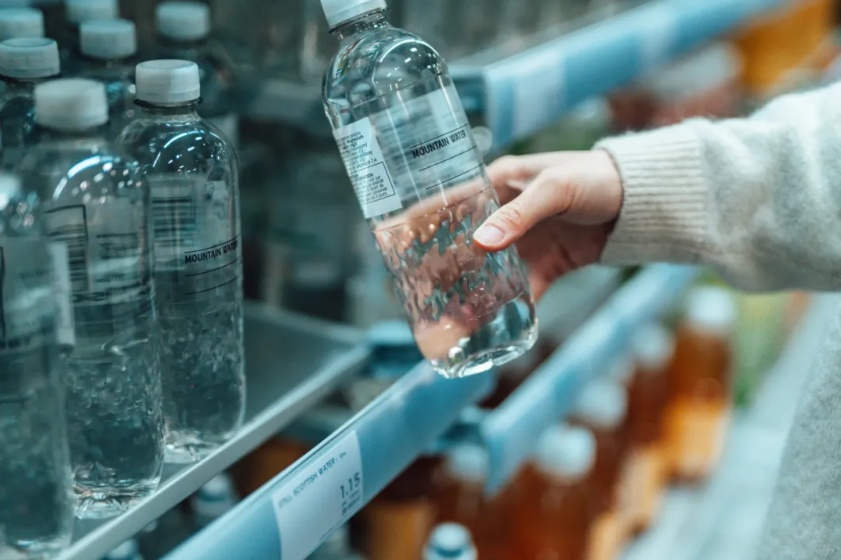Controllable Delamination in PET Recycling: Henkel Launches Alkali-Washable Dispersible Hot Melt Adhesive for PET Bottle Labels
In beverage packaging, PET bottles dominate the market due to their lightweight, durability, and transparency. However, to truly achieve high-quality closed-loop recycling, every component beyond the bottle itself must "cooperate" with the recycling process, and the adhesive used for labels is particularly crucial. Difficult-to-remove adhesive residues can adhere to the surface of PET flakes, causing impurity contamination, which reduces the quality of the recycled material and may even affect its application in sensitive scenarios such as food contact.
The draft of the EU Packaging and Packaging Waste Regulation (PPWR) is promoting the recyclability of packaging design and proposes mandatory recycled content targets: from 2025, single-use PET bottles must contain at least 25% recycled material, and by 2030, at least 30%. Although over 60% of PET bottles are currently collected for recycling in Europe, industry assessments show that more than 11 billion additional bottles could be brought back into the recycling system each year. One of the obstacles is the degradation of materials caused by adhesive and label residues.

Conventional hot melt adhesives used for labeling PET bottles can typically only be removed by about 12%–30% during the standard recycling process (including hot alkaline washing—hot sodium hydroxide bath). As a result, the PET sheets are affected by haze and yellowing, and the barrier properties and optical performance of the recycled material are compromised, making it unsuitable for high-value applications such as food packaging. This also increases the operational burden on cleaning and sorting systems.
Henkel has launched Technomelt EM 335 RE, which focuses on "releasing at the right moment." Its formulation is optimized for modern recycling processes, emphasizing that it can be dispersed during the alkaline washing phase and separated from the material stream along with label residues. The key indicators and process characteristics provided by the official source include:
It can remove up to 98% of adhesive residue (under hot caustic washing conditions), significantly reducing the risk of surface contamination on PET sheets.
Suitable for both paper and plastic label substrates, accommodating mainstream labeling scenarios.
Labeling speed can reach up to 40,000 bottles per hour, meeting the requirements of high-speed filling lines.
The relatively low processing temperature of 110–140 °C helps reduce energy consumption, alleviate equipment thermal load, and enhance operational safety.
Free from mineral oil and compliant with food contact regulations, suitable for applications more sensitive to migration and odors.
Using X‑tra‑Chubs format for material packaging emphasizes feeding safety and reduction of packaging waste.
Recognized by the German PETCYCLE system, providing a reference for the implementation of localized closed-loop systems.
From the perspective of the recycling end, a higher delamination rate means less adhesive contamination and secondary deposition, which is beneficial for:
Reduce the haze and yellowing of sheets to improve the optical appearance of recycled materials.
Stabilize downstream melt filtration and melt flow index, reduce black spots, gels, and screen blockage.
Enhance the feasibility of food-grade recycling to create conditions for brands to achieve **regulatory content targets (25%/30%)**.
Reducing the "overuse" of cleaning chemicals and energy consumption may potentially improve the carbon footprint and operational costs per unit bottle.
Matching actual process: Alkali washing temperature, duration, NaOH concentration, mechanical agitation/ultrasonication, pre-label removal, and sorting strategies will all affect the de-adhesion effect. It is recommended that recycling plants and bottlers carry out small-scale/pilot tests and record indicators such as residual adhesive rate, sheet color, pellet odor, and COD/FOG of the washing solution.
Label/Ink/Lamination Synergy: Even if the adhesive can be removed, the ink system, lamination, and coating layer may also become sources of contamination. Therefore, the recyclability of the entire labeling material set should be evaluated together.
Re-deposition and particle management: Focus on the dispersed particle size of detached adhesive and retention strategies (flotation/screening/dissolved air flotation) to prevent re-adsorption during the washing/rinsing stages.
Regulations and Compliance: Food contact compliance requires a systematic confirmation based on the final application of recycled materials and local regulations; for cross-border supply chains, it is necessary to verify REACH/food contact declarations and migration test reports.
Life Cycle Assessment (LCA): When introducing low-temperature processing and high-degumming formulations, it is recommended to simultaneously assess the impact of energy consumption, material loss, and chemical usage on overall environmental performance.
With the advancement of policies such as PPWR and the combined effect of recycled content targets, the "controllable delamination capability" of label adhesives is becoming a key process point for PET closed-loop recycling. Technomelt EM 335 RE, featuring alkali-wash dispersibility, up to 98% removal rate, low processing temperature, and food-grade compliance, is expected to help reduce impurities and improve rPET quality. However, its actual benefits still depend on specific process parameters and supporting materials. The industry chain needs to achieve joint tuning and validation to translate laboratory metrics into stable mass production performance.
【Copyright and Disclaimer】The above information is collected and organized by PlastMatch. The copyright belongs to the original author. This article is reprinted for the purpose of providing more information, and it does not imply that PlastMatch endorses the views expressed in the article or guarantees its accuracy. If there are any errors in the source attribution or if your legitimate rights have been infringed, please contact us, and we will promptly correct or remove the content. If other media, websites, or individuals use the aforementioned content, they must clearly indicate the original source and origin of the work and assume legal responsibility on their own.
Most Popular
-

EVA Morning Prices on September 12: Most of the Market Holds Steady, Highest Rise of 50 Yuan
-

[PET Weekly Outlook] Polyester Bottle Chips Expected to Oscillate and Warm Up with Costs Today
-

List Released! Mexico Announces 50% Tariff On 1,371 China Product Categories
-

Top Ten Personnel Changes in the Auto Industry: Insights into Industry Anxiety and Progress | Vision 2025
-

Case Study | Clariant AddWorks™ Additives Solve Plastic Yellowing Problem






